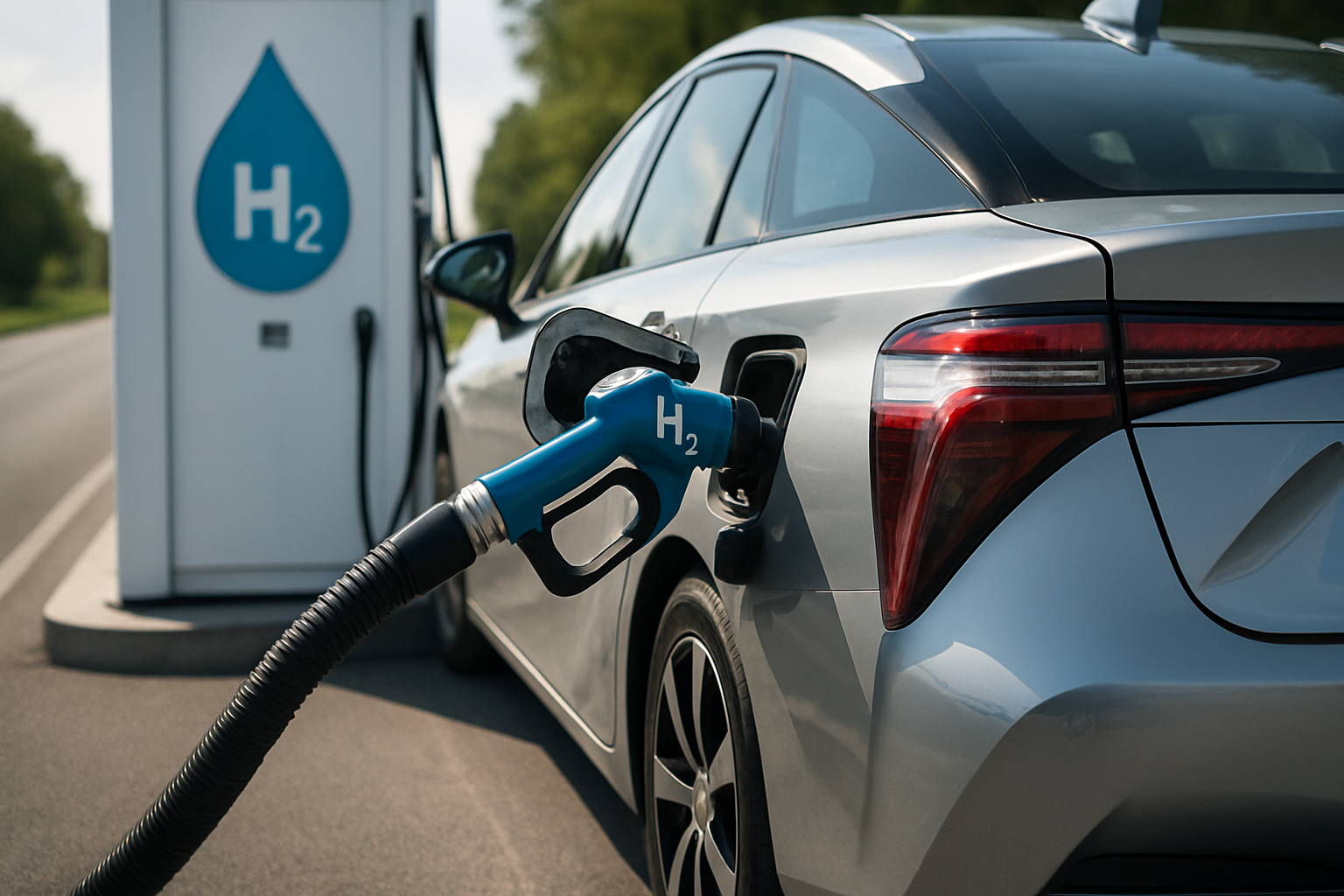Exploring Automotive Hydrogen Storage Technologies
Hydrogen-powered vehicles are gaining traction as a promising alternative to traditional combustion engines. This article delves into the cutting-edge world of automotive hydrogen storage technologies, examining the challenges, innovations, and potential future applications that could revolutionize the way we fuel our cars.

Understanding the Fundamentals of Hydrogen Storage
Hydrogen storage in vehicles presents unique challenges due to its low density and high volatility. Traditional storage methods involve compressing hydrogen gas to extremely high pressures or liquefying it at cryogenic temperatures. Both approaches come with their own set of drawbacks, including energy losses during compression or liquefaction, as well as the need for specialized tanks that can withstand extreme conditions.
The ideal hydrogen storage system for automotive applications must meet several criteria: high storage capacity, fast refueling times, safety, and cost-effectiveness. These requirements have driven researchers to explore novel approaches that go beyond conventional compression and liquefaction techniques.
Advanced Composite Tanks: Balancing Safety and Efficiency
One of the most promising developments in automotive hydrogen storage is the advent of advanced composite tanks. These tanks typically consist of a polymer liner reinforced with carbon fiber, providing exceptional strength while minimizing weight. The latest generation of composite tanks can withstand pressures of up to 700 bar (10,000 psi), allowing for increased hydrogen storage density without compromising vehicle performance or range.
Manufacturers are continually refining the design and manufacturing processes of these tanks to improve safety and reduce costs. Some recent innovations include the integration of smart sensors that can detect leaks or damage in real-time, as well as the development of novel fiber-winding techniques that enhance structural integrity while reducing production complexity.
Metal Hydrides: Solid-State Storage Solutions
Metal hydrides offer an intriguing alternative to high-pressure gas storage. These materials can absorb hydrogen atoms into their crystal structure, effectively storing hydrogen in a solid form. When heat is applied, the hydrogen is released, providing a controlled and safe method of fuel delivery.
Recent advancements in metal hydride technology have focused on improving storage capacity and hydrogen release kinetics. Researchers are exploring complex hydrides and nanostructured materials that can store hydrogen at higher densities and release it more rapidly. While still in the experimental stage, these solid-state storage solutions could potentially offer safer and more compact hydrogen storage options for future vehicles.
Cryocompressed Hydrogen: Bridging the Gap
Cryocompressed hydrogen storage represents a hybrid approach that combines the benefits of both compression and liquefaction. In this method, hydrogen is cooled to cryogenic temperatures (around -253°C) and then compressed, resulting in a higher storage density than either method alone.
This technology is particularly promising for heavy-duty vehicles and long-haul transport, where maximizing range is crucial. Several automakers and research institutions are actively developing cryocompressed hydrogen systems, with some prototypes demonstrating storage densities approaching those of liquid hydrogen while avoiding the challenges associated with maintaining extremely low temperatures.
Liquid Organic Hydrogen Carriers: A Chemical Approach
Liquid Organic Hydrogen Carriers (LOHCs) offer a radically different approach to hydrogen storage. These compounds can chemically bind hydrogen molecules, storing them in a liquid form at ambient temperatures and pressures. When needed, the hydrogen can be released through a catalytic process.
The advantage of LOHCs lies in their ability to leverage existing liquid fuel infrastructure for storage and transportation. This could potentially reduce the costs associated with developing specialized hydrogen distribution networks. However, challenges remain in optimizing the hydrogen loading and unloading processes, as well as improving the overall energy efficiency of the system.
The Road Ahead: Integration and Standardization
As hydrogen storage technologies continue to evolve, the automotive industry faces the challenge of integrating these innovations into practical, market-ready vehicles. Standardization of storage systems, fueling protocols, and safety regulations will be crucial in facilitating widespread adoption of hydrogen-powered vehicles.
Collaborative efforts between automakers, technology companies, and regulatory bodies are already underway to establish common standards for hydrogen storage and refueling infrastructure. These initiatives aim to ensure interoperability between different vehicle models and refueling stations, paving the way for a more cohesive hydrogen mobility ecosystem.
A Hydrogen-Powered Future
The rapid advancement of automotive hydrogen storage technologies is bringing us closer to a future where hydrogen-powered vehicles are a viable and widespread alternative to conventional cars. From advanced composite tanks to innovative solid-state storage solutions, the industry is exploring multiple avenues to overcome the challenges of storing and utilizing hydrogen efficiently and safely.
As these technologies mature and costs decrease, we can expect to see an increasing number of hydrogen-powered vehicles on our roads. The journey towards a hydrogen-based transportation system is complex and multifaceted, but the potential benefits in terms of environmental impact and energy security make it a compelling path forward for the automotive industry.





